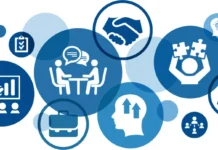by Michael J. Devereux II, Mueller Prost
On Sept. 5, 2013, the US Treasury proposed five changes to regulations defining research expenditures under Internal Revenue Code §174. As an added bonus, Treasury indicated that taxpayers may rely upon these proposed regulations for all tax years. On July 18, 2014, these regulations were finalized with minimal changes.
The first change to the §174 regulations likely has the most significant impact for plastics manufacturers. The proposed regulations provide that if expenditures qualify as research or experimental expenditures, it is irrelevant whether a resulting product is ultimately sold or used in the taxpayer’s trade or business. Plastics processors should be considering whether the costs of newly developed molds1, prototype parts, and machinery or equipment that is developed in-house may qualify as research expenditures.
Other changes include the application of the definition of research to depreciable property, the definition of a pilot model, and makes clear that the general rule that the costs of producing a product after uncertainty concerning the development or improvement of a product is eliminated are not eligible expenses under §174 because these costs are not for research or experimentation.
Finally, the proposed regulations introduce a shrinking back rule to the §174 expenditures, requiring taxpayers to shrink back to the subset of activities or expenditures that are directly involved in research, thereby limiting the amount one may classify as research. Historically, the internal revenue code has provided that research expenditures include all such costs incident to the development of a product. However, the shrinking back rule is not a new concept. It has been part of the fabric of IRC §41 The Credit for Increasing Research Activities for over 15 years. For instance, if a taxpayer is developing a new mold and its research activities relate to the cores and cavities of the mold and not the mold base, the taxpayer may be required to shrink back its research supply expenditures to the materials used and tested in the development of the cores and cavities and exclude the cost of the mold base. Contrast this example with a company that designs and develops a custom mold base in conjunction with the cores and cavities. This may be done due to complex venting or water-line designs. In this instance, the mold base is an instrumental part of the design of the mold and may qualify as a qualified research expenditure.
About the R&D tax credit
The R&D tax credit is one of the most under-utilized tax savings opportunities for companies in the plastics industry. The R&D tax credit rewards companies who invest resources in innovation, product development, mold design, new materials or resins, and process development/improvement. In addition to Federal tax savings, over 30 states have a similar program that rewards companies for the development or improvement to its products or processes.
- In 2009, TG Missouri won a tax court case in which it claimed payments to 3rd party toolmakers as supplies used in the conduct of research (See TG Missouri Corporation v. Commissioner, 133 TC 278).
Michael J. Devereux II, CPA, is a partner and director of manufacturing and distribution services at Mueller Prost, a CPA and Business Advisory firm. His primary focus is on tax incentives available to manufacturers. Mueller Prost’s Tax Incentives Group is nationally recognized and has assisted hundreds of companies in the manufacturing sector to identify and utilize these incentives. Mueller Prost is a member of MAPP and offers MAPP members three hours of complimentary tax and accounting advice. For more information, call 314.862.2070 or email mdevereux@muellerprost.com.




